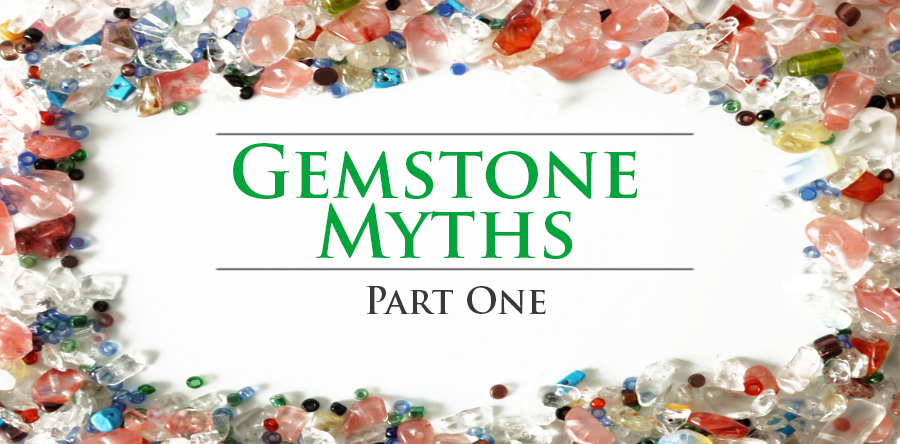With the bewitching Halloween season nearly upon us, I thought we would take a short break from the science, fashion, and art approach we usually take and have a little fun. Halloween is long known for being a spooky holiday, but we all know it’s just a bunch of hocus pocus. Jewelry and gemstones have long too been noted for other-wordly powers. Gemstones especially have different myths and meanings, depending on the culture. Where some civilizations or cultures believe a certain gem is bad, others would argue that it is full of good luck and prosperity. So let’s take a break and have a look-see at some of the ways gemstones are viewed across other cultures.

Let’s start with opals. Opal, opal, opal. What did she ever do to deserve such poor treatment? Opal is a gem laden with a heavy stigma. Opal is said to bring terrible luck. So terrible, in fact, that some believe that opal (and pearls) bring horrendous luck to the recipient (unless the recipient is the purchaser). Superstitious people are warned to neither give nor accept opals or pearls as a gift. This ill-fated rap is cited as the reason why opal should never be used in an engagement ring, lest the new bride quickly find herself a widow. That is pretty dark. However, many Eastern cultures consider opal to be a good luck charm. For those subscribing to this bad-luck superstition, there is a way around the bad luck associated with opal: diamonds. Diamonds, being the hardest substance on Earth, are said to have power over opals, thus negating their negative impacts. Another way around opal’s bad luck is if you’re lucky enough (pardon the pun) to be born in the month of October. Opal, along with pink tourmaline, is the birthstone of October. It is said, by some, that people whose birthstone is opal are impervious to its negative effects.
Pearls get the same bad reputation. Pearls, although seen on brides every day, are said to represent the bride’s tears over an unhappy marriage. There is a silver lining though. Some say that pearls are the perfect jewelry choice for a bride, as they capture and keep the bride’s tears, so she has none to shed in her happy union. There are further good benefits to pearls, beyond the wedding day. For the couple hoping to expand their family, the pearl is said to be not only an aphrodisiac, but also a way to enhance the chances of conceiving if the couple sleeps with a pearl under their pillows. Pearls are thought, by some, to also cure madness, along with jaundice, snake bites, and bug bites.
Pearls aren’t the only gemstone which are thought to have medical properties. Rubies, for example, are thought to be able to alert the wearer of previously unknown health issues. Or, back in the day, if you were suffering with an upset stomach, ground ruby powder was placed on the tongue as a remedy for indigestion. Frankly, I’m not sure I would waste a ruby by grinding it into a powder. Beyond the physical, rubies have long represented power, heat, passion, and wisdom. In fact, the Bible, in Proverbs 3:15, in reference to wisdom, not a person, says “She is more precious than rubies…” This is saying a lot, considering at the time, and for many centuries afterward, rubies were the most valuable and sought-after of gemstones.
Emeralds are another beguiling gem. A favorite of Elizabeth Taylor (although, oddly not of her most famous role, Cleopatra; emeralds were actually pretty rare in Cleopatra’s time, since the Egyptian mining of emeralds did not start in any significant way until approximately the time of Cleopatra’s death), superstition holds that emeralds are another aphrodisiac, and are therefore popular with newlyweds. Legend further holds that the emerald’s deep, cool green color rests the eyes and can restore vision in the blind. Emerald brings good luck to court, but holding it under your tongue can supposedly summon evil spirits…so don’t do that.
Sapphire, like so many of the gems we discussed today, are thought to bring good luck to romance. Including a sapphire in an engagement ring or wedding band is becoming increasingly popular, which likely has less to do with superstitious brides and more to do with the rampant popularity of Duchess Kate Middleton’s sapphire engagement ring, which was previously Princess Diana’s engagement ring.
I guess what this all boils down to is that you can give a stone significance for whatever reason you choose. Don’t like the color green? Tell your man you’ve always heard that emeralds summon evil spirits. Love sapphires? Lobby hard for one by telling your future fiancé that they bring marital bliss. The true power of any gemstone is the power you give it. For example, my birthstone is amethyst, and although not the most precious of the gemstone crowd, the amethyst and diamond ring I was given on the occasion of my 25th birthday means a lot to me, because it was from my parents. They know how I love (read: adore, live for, think about all day and all night) jewelry and they took the time to select something special for me. I don’t pay much attention to what the superstitions say about amethyst, because for me, it will always be a symbol of my parents’ love.
Rebecca
P.S. In case you are curious, since ancient times, amethyst has been considered a symbol of sincerity and stability. It was thought to protect against thieves, plagues, and falling in love foolishly. Also, the ancient Greeks thought it had power to prevent the wearer from getting intoxicated (the name “amethyst” is derived from two Greek words meaning “not drunken”).










